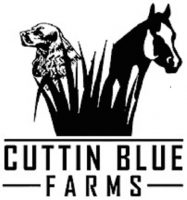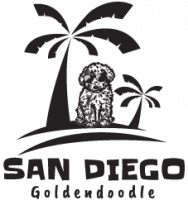 Just as human beings need to adjust their diets as they age, in the same way dogs’ diets must be modified as they grow old to meet their nutritional needs. Nevertheless, there is a difference between humans and dogs, and this is that what is good for one dog is not necessarily good for another dog, while for humans is the opposite.
Just as human beings need to adjust their diets as they age, in the same way dogs’ diets must be modified as they grow old to meet their nutritional needs. Nevertheless, there is a difference between humans and dogs, and this is that what is good for one dog is not necessarily good for another dog, while for humans is the opposite.
Each breed, and even each dog, has very particular and specific nutritional requirements that depend on its general health condition and health history, and are the main considerations when thinking about changing its diet in any way.
There are three truths you have to understand before deciding what brand of dog food for senior dogs you should feed your pal if it is necessary to change its diet:
1. Not every senior dog gets fat
Many senior dog food recipes are low in calories and fat; however, it is not good to feed your older dog a reduced calories meal if its weight is OK or it is very thin. Some signs of aging in dogs that can cause the loss of weight are:
Less appetite
Difficulty to chew and eat
Reduced sense of smell and/or taste
A health issue that rises its metabolic rate and intensifies muscle atrophy
If your senior pal is overweight, the best way to manage its weight and keep it fit is to control the portions it eats and to develop a regular exercise routine with your friend.
2. Older dogs require as much protein as adult ones
The truth is that senior dogs may need even more protein than younger pals.
Dog food for senior dogs normally contains less protein because of bad logic: even puppies and healthy dogs have a hard time digesting the protein contained in commercial dog food, but this is due to the extremely bad quality of protein these brands use. Poor protein causes your dog’s kidneys and liver to work in excess to digest food that they are not designed to process.
After years of feeding your younger dog these diets, it is logical that the brand’s senior formulas come with less protein! When its organs start to fail, if you keep giving your dog the same amount of protein, its systems will collapse.
The sad thing is that in reality your senior dog needs more protein as it gets older to preserve its muscle mass and a strong organ and immune performance.
Since very young, dogs should be given protein that is unprocessed, whole and if possible, raw.
3. Senior dogs shouldn’t eat fiber
It is a reality that older dogs get constipated; however, this is not solved by adding fiber to their food formulas.
Fiber will make your dog poop more, but it will also interfere in the absorption of healthy and much needed nutrients. An excess of fiber can obstruct your pal’s small intestine, preventing the digestion of antioxidants, vitamins and minerals. Instead of feeding your older dog fiber to prevent constipation, try feeding him a diet that is balanced, very rich in water and right for its breed. Also, complement his diet with digestive enzymes and probiotics.
Learn How the Best Dog Food Reviews Rate Dog Food
Sometimes while looking for the best dog food for your senior dog it is not enough to read an array of senior dog food reviews. Even the best reviews may not convince you, or the differences between them may leave you in doubt as to which food is really the best.
If you find yourself in this situation, here is a list of the top-to-least recommended senior dog diets. Take this as a new parameter you can consider in your search for the ideal food for your pal:
Balanced and raw homemade food
This is the best food you can give your old friend because you fully control the quality of the ingredients.
It is balanced because you follow specific recipes and it is raw because the food is untouched, meaning it still has the enzymes and nutrients that normally disappear when you cook or process the food.
Commercial raw food
This is basically the same as the above but made by another person. Not all the raw recipes available are complete diets, so you have to make sure the label specifies so.
These are normally found is small, chic pet stores or online.
Balanced and cooked homemade food
The same as number 1 but cooked, which means some of the nutrients are not at 100%.
Human-grade canned food
The label will say if the ingredients canned are human-grade. Canned dog food with this kind of ingredients is a lot more expensive than the normal canned options.
If you have more time than money, go for the balanced homemade food and save your money, but if it is the other way around, by all means feed your senior dog this treat!
Human-grade dry food
In general, for senior dogs, wet food is better than dry, but whichever you choose, make sure it is human-grade, which means the food is approved for human ingestion.
Super premium canned food
This is the kind you find at pet stores.
Super premium dry food
Same as the above but it is not as good for senior dogs as wet food.
Vet-sponsored canned food
These foods are normally offered at the vet’s clinic and are commercial brands.
Vet-sponsored dry food
Same as number 8 but below it because it is dry.
Grocery store brand canned food
This is the kind dog owners buy because is less expensive than commercial brands.
Grocery store brand dry food
Dry version of the above. Dry food is harder for senior dogs to eat.
Semi-moist pouched food
This is one of the least recommended foods for dogs because it contains propylene glycol to keep it semi-moist. This preservative is related to the antifreeze ethylene glycol and it is not healthy for dogs.
Unbalanced, raw or cooked homemade food
This is the same as feeding your senior dog a portion of what you eat yourself.
This food is not nutritionally balanced for your pal, which causes endocrine irregularities, bone problems and organ deterioration because of the lack of calcium, minerals and omega fatty acids.
Understanding Dog Food Labels
The best way to know you are feeding your senior dog the healthiest food out there is to read and understand the label on the food’s package.
When you go to the ingredient list, this is what you want to know:
The first ingredient listed is the main ingredient. That first ingredient is the base for that specific food; this means it is the one found in bigger quantities in the food. Why? Because dog food brands have to list their ingredients in order of weight. The first ingredient listed on the labels of superior quality brands or mixes of dog food for senior dogs will be real lamb, chicken, beef, turkey or fish.
The top ten ingredients make 80 percent or more of the mix. This is the most accurate way to know the quality of the food you’re considering feeding your senior dog. Just compare a top quality brand label with any of the leading dog food brands labels and you will see a big difference.
Let’s take a look at these two real examples:
| Superior quality brand top 10 ingredients | Leading brand top 10 ingredients |
| 1. Deboned chicken | 1. Ground yellow corn |
| 2. Chicken meal | 2. Poultry by-product meals |
| 3. Whole ground brown rice | 3. Corn gluten meal |
| 4. Whole ground barley | 4. Whole wheat flour |
| 5. Oatmeal | 5. Beef tallow preserved with mixed tocopherols (Vitamin E source) |
| 6. Rye | 6. Rice flour |
| 7. Whole potatoes | 7. Beef |
| 8. Chicken fat | 8. Soy flour |
| 9. Menhanden fish meal | 9. Sugar |
| 10. Tomato pomace | 10. Sorbitol |
Some brands catalog their ingredients in various different ways to make sure the least healthy ones appear at the end of the list. For example the food may contain, in order of appearance: Chicken, Ground corn, Corn gluten, Ground wheat, and Corn bran.
If they listed all the corn ingredients together, this grain would probably turn out to be the first ingredient due to the total percentage present in the mix.
Make sure you read everything on the list, especially the last ingredients, where you may find artificial preservatives and colors. If you see any of these, discard that food brand immediately.
With this knowledge we are sure your search for the healthiest dog food for senior dogs will be much easier and less traumatic for you and your old friend.





